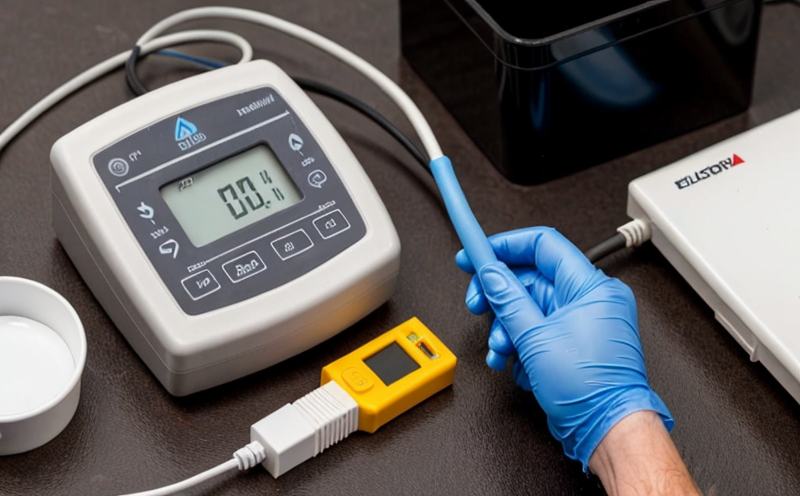CFR 21 Electrochemical Testing of Drugs and Packaging
The Code of Federal Regulations (CFR) Title 21, Part 117, outlines specific requirements for current good manufacturing practices in the production and distribution of drugs. Compliance with CFR 21 is critical to ensure drug safety and efficacy. Electrochemical testing plays a pivotal role in the quality assurance and regulatory compliance processes by evaluating the integrity, purity, and stability of pharmaceuticals and their packaging materials.
Electrochemical tests are particularly important for assessing the compatibility between active pharmaceutical ingredients (API) and excipients with packaging materials such as containers, closures, and seals. These tests help prevent drug degradation due to interaction or migration from the container into the drug product, which could lead to potential safety hazards for consumers.
The electrochemical properties of materials can influence their performance in various environments, including humidity, temperature fluctuations, and exposure to light. Therefore, it is essential to conduct these tests at different stages of the manufacturing process—during raw material evaluation, formulation development, stability testing, and final product release.
During the test, electrochemical impedance spectroscopy (EIS) or potentiometric titration methods are commonly used to evaluate the diffusion behavior, ion permeability, and overall compatibility between drug substances and packaging materials. These techniques allow for precise measurement of ionic conductivity and stability over time under controlled conditions.
The results from these tests contribute significantly towards meeting regulatory requirements set forth by CFR 21, ensuring that any potential risks associated with the use or storage of pharmaceutical products are minimized. By adhering to this standard, manufacturers can demonstrate compliance while maintaining high standards of product quality and safety.
Scope and Methodology
| Test Parameter | Description |
|---|---|
| Electrochemical Impedance Spectroscopy (EIS) | Evaluates the diffusion behavior, ion permeability, and overall compatibility between drug substances and packaging materials. |
| Potentiometric Titration | Determines ionic conductivity and stability over time under controlled conditions. |
| Humidity and Temperature Cycling | Simulates real-world storage conditions to assess long-term compatibility. |
| Light Exposure Testing | Evaluates the effect of light on drug integrity and stability. |
The methodology involves preparing specimens according to specific protocols, conducting electrochemical impedance spectroscopy (EIS) measurements using a frequency range from 1 Hz up to 1 MHz, and performing potentiometric titrations at various pH levels. Additionally, humidity and temperature cycling tests are conducted to simulate storage conditions over extended periods.
Data collected during these experiments is analyzed statistically to determine the extent of ion migration or degradation that might occur due to interactions between the drug substance and packaging materials. The results provide valuable insights into potential issues that could arise if the product were exposed to certain environmental factors, allowing for necessary adjustments in formulation or packaging design.
Why Choose This Test
Selecting CFR 21 electrochemical testing ensures your company meets stringent regulatory standards set by federal authorities. By incorporating this service into your quality assurance program, you not only comply with legal requirements but also enhance consumer trust in the safety and reliability of your products.
- Guarantees adherence to FDA regulations for drug manufacturing and packaging.
- Reduces risk of product recalls and associated costs.
- Promotes continuous improvement by identifying areas needing enhancement early on.
- Aids in maintaining consistent product quality across different batches or lots.
- Facilitates smoother interactions with regulatory bodies during audits and inspections.
In addition, employing experienced professionals who specialize in this area ensures accurate interpretation of results and implementation of appropriate corrective actions when needed. This comprehensive approach helps protect both your brand reputation and consumer health by ensuring every aspect related to drug safety is thoroughly evaluated.
Customer Impact and Satisfaction
- Increased Compliance: Ensures strict adherence to FDA guidelines, reducing non-compliance risks.
- Better Product Quality: Identifies potential issues before they become significant problems, enhancing overall product quality.
- Enhanced Consumer Trust: Demonstrates commitment to safety and reliability, fostering greater consumer confidence in the brand.
- Improved Efficiency: Streamlines processes by providing clear evidence of compliance, minimizing delays during regulatory reviews.
- Potential Cost Savings: Avoids costly recall campaigns and legal actions by preventing issues early on.
- Positive Reputation: Builds a strong reputation among stakeholders, including customers, partners, and investors.
Our experienced team works closely with clients to understand their unique needs and deliver tailored solutions that meet or exceed expectations. With our commitment to excellence and attention to detail, we strive to provide peace of mind knowing that every step taken contributes towards maintaining the highest standards in pharmaceutical manufacturing and packaging.





